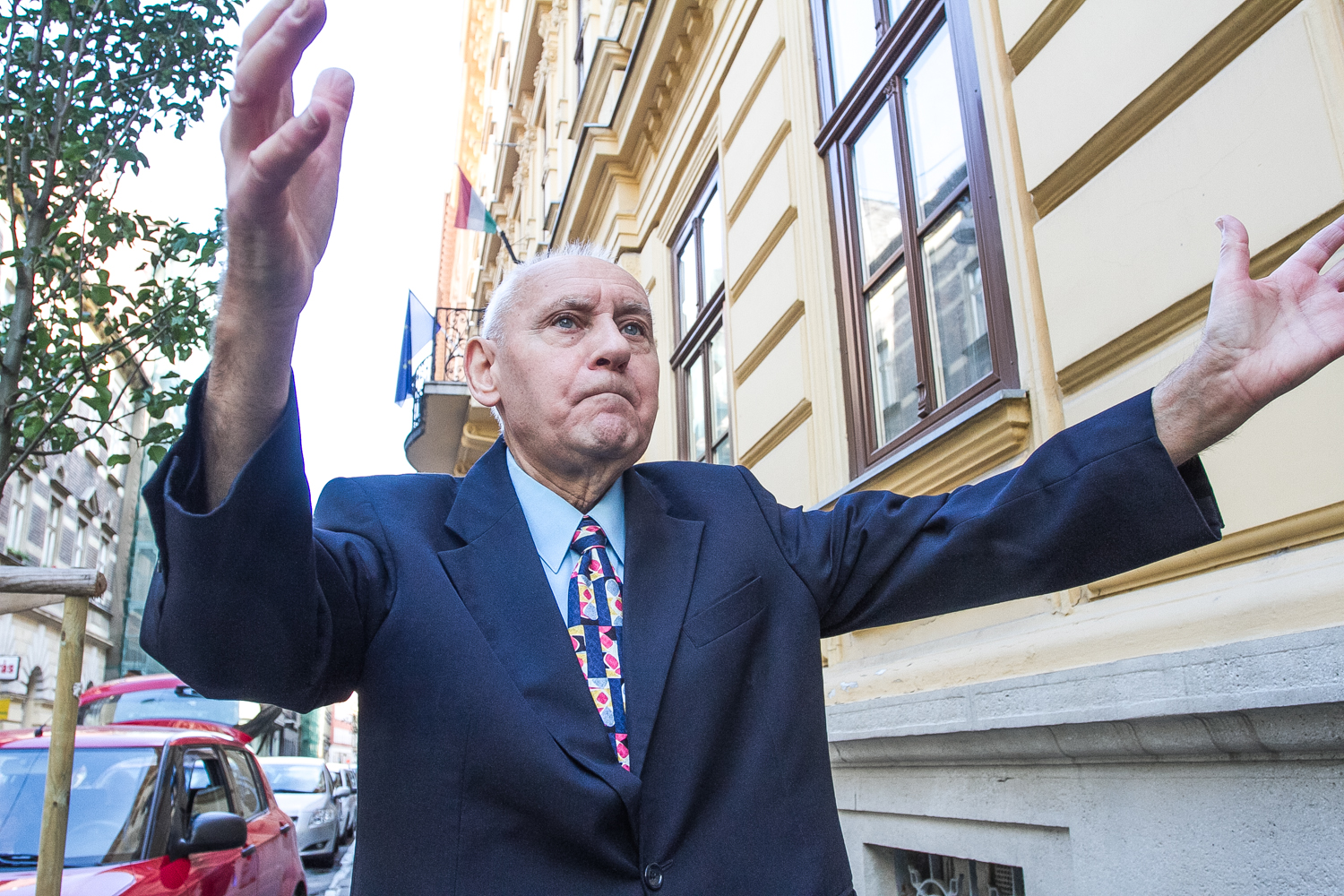When bullets first pierced the night air over downtown Pest’s Bródy Sándor Street on October 23, 1956, György Kalmár was there among the crowd of demonstrators who would soon become freedom fighters. Now 75 years old, Mr. Kalmár shares his memories of that fateful day.
Like so many Budapest citizens caught up in the volatile chaos as the 1956 Revolution arose, György Kalmár-Maron was already unduly familiar with the horrors of war – as a lifelong city resident, his childhood was marred by the catastrophes of World War II, when he and his Jewish mother were forced into hiding before enduring the Red Army’s siege of Hungary’s capital. After the Nazis were driven out, Mr. Kalmár and his mom were reunited with his father – the accomplished and outspoken journalist Ferenc Maron – and with gratitude that they all survived, the small family carried on with optimism for a brighter future in post-war Hungary.
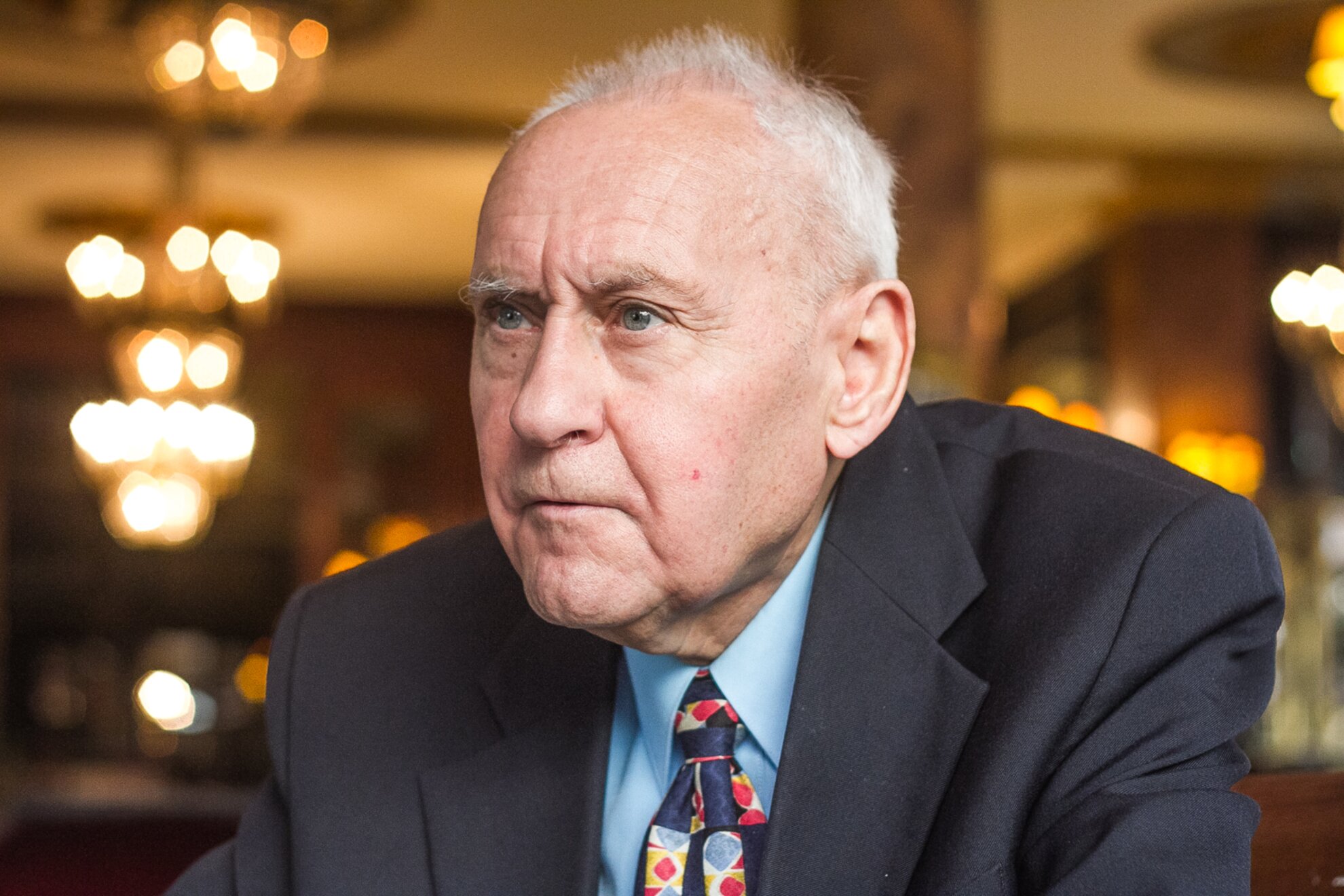
The optimism was short-lived. In the late 1940s, Mr. Kalmár’s English-speaking father was poised to realize his professional dream of working abroad with an assignment to serve as a press attaché in Washington DC, but before this came to pass the Soviet-backed government tightened its grip on Hungarian society, preventing him from taking the post. As the communists increasingly silenced any voices that could be considered critical of the regime, it became ever more difficult for Mr. Maron to continue his journalistic work, yet he never compromised his independent principles despite the struggles this presented in providing for his family, and he taught his son English – a skill that still serves Mr. Kalmár well.

By October 23, 1956, Mr. Kalmár was an 18-year-old student who shared the Hungarian people’s widespread enmity against their Kremlin-controlled government. That day, he and his classmates joined the massive protest at Buda’s Bem Square in solidarity with the concurrent Polish October movement opposing Stalinization in the Soviet bloc. “So many people came from all over,” Mr. Kalmár recalls. “We stood amid the crowd; there had never been such a demonstration. At that period, there was only enthusiasm.”

Exhilarated with the jubilant spirit of unity shared among the demonstrating multitudes, Mr. Kalmár and his classmates joined the impromptu march that filled Margaret Bridge as they crossed over to the city’s Pest side, flooding past the Parliament House en route to the Magyar Rádió headquarters on Bródy Sándor Street, just behind the National Museum. In front of the radio station’s main entrance, Mr. Kalmár and his friend Lajos Apáti squeezed through the dense crowd of protestors calling for their demands for democracy to be broadcast live on the air.

As evening faded into nighttime and the protestors refused to dissipate, Mr. Kalmár remembers that it was about 10pm when the situation took an ominous turn with the firing of tear-gas grenades – and around a half hour later, gunshots blasted from the windows of the first-floor balcony above the Magyar Rádió entrance. “From the balcony and from all over, they drew their weapons and started to shoot into the crowd,” he says. “I took cover behind an alcove of the adjacent building; one young man was shot dead just four people away from me.”

Amid the panic following this first rapid-fire volley, some demonstrators created a makeshift stretcher for this early victim of the uprising. “A door was removed, and his body was placed on it and marched below the balcony to present it to the soldiers, saying ‘Look what you’ve done! He’s dead!’” Mr. Kalmár exclaims. “They stopped shooting, but started shooting again, and then we ran.”
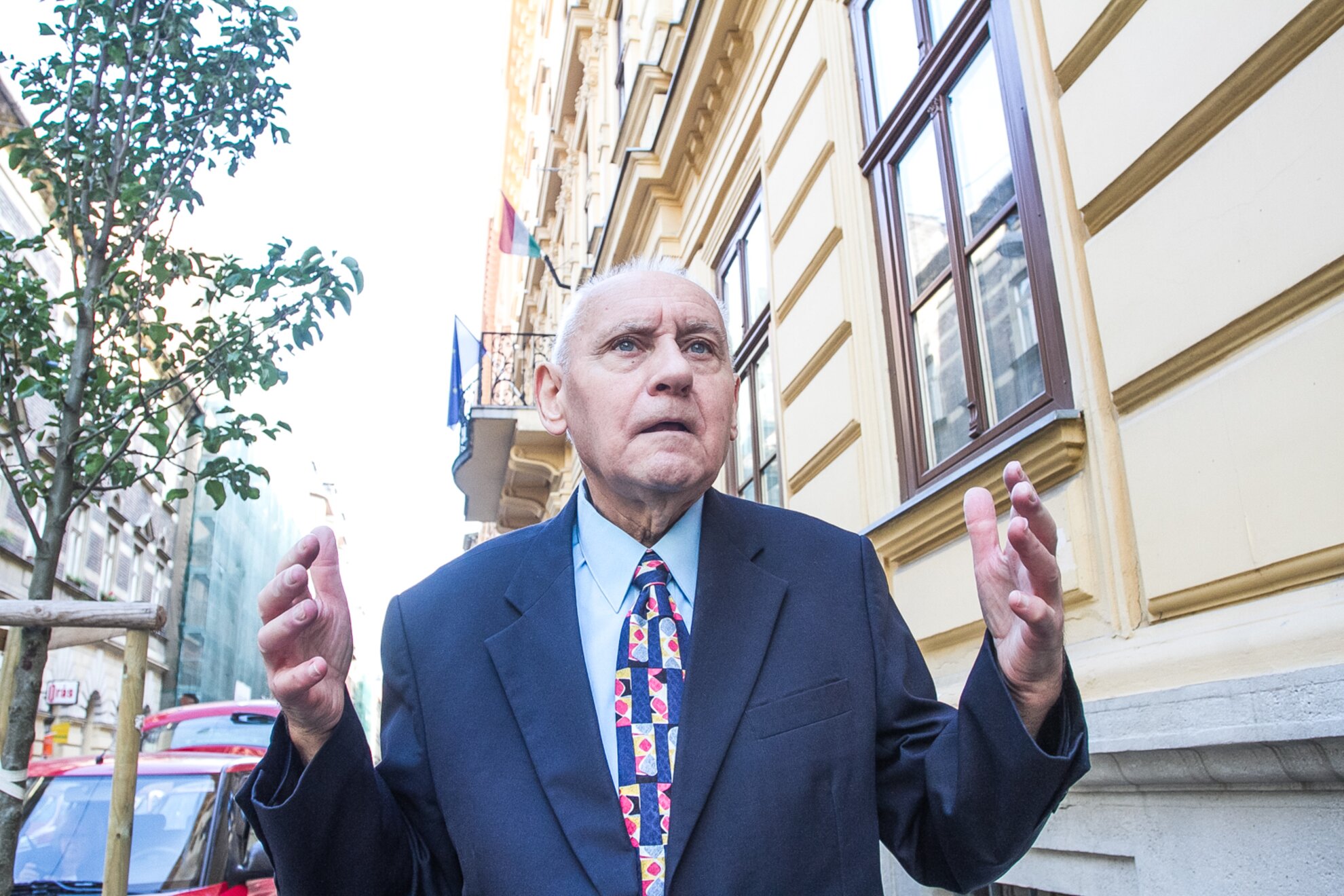
In the melee, Mr. Kalmár was separated from Mr. Apáti; “for years I didn’t know what happened to him. He went on to distribute flyers during the revolution – he was involved more than I was, and he was jailed afterwards.” Now alone amid the frantic crowd fleeing from continual gunfire behind them, Mr. Kalmár ran through clouds of tear gas all the way to the entrance gate of the National Museum gardens, where his curiosity drove him back towards a rear-corner vantage point of the museum grounds that allowed him to witness the ongoing scene on Bródy Sándor Street and adjacent Pollack Mihály Square.

“Along with a few other people, we hid behind a stone monument and watched what was happening for about 25 minutes,” Mr. Kalmár says, noting that the monument is still in that corner of the gardens; 1956 memorial wreaths are periodically laid before it to this day. “By that time more soldiers were congregating on Pollack Mihály Square. Trucks came carrying soldiers, there were three or four of them in a line.”

As the soldiers were sent into the mayhem, Mr. Kalmár wanted to escape, but he didn't dare leave the secure cover of the stone memorial until after the soldiers had moved away, by which point the other observers had all fled. Just before he followed them, “I was the only eyewitness to this – standing by the empty lorries, there was one officer. One man came from the radio building and cried to the officer, ‘Please, just look at how your soldiers kill the innocent people! Please don’t let it happen! Please come to our side and help the people!’”

Leaving immediately after witnessing this desperate plea, Mr. Kalmár headed toward Kálvin Square and saw the first sure sign that this gathering had transformed from a demonstration to a revolution. “In Kálvin Square there was a big lorry, where one man was distributing Kalashnikovs to anyone who could get them,” he recalls, and at that point Mr. Kalmár faced one of the biggest decisions of his life. “I considered taking a gun. I thought that I would go return to what was, at that point, a revolution.”

After a few intense moments of thinking it over, Mr. Kalmár chose not to participate in the fighting, and he never once picked up a weapon during the 1956 Revolution. “I was the only child of my parents,” he explains, noting that even if he had survived the warfare, deciding to join the freedom fighters meant risking imprisonment or exile. “With any option, I would’ve had to leave my parents, and that’s what I did not want to do. I think that it was a good decision,” Mr. Kalmár says, proud to have been able to take care of his mother through her old age for several decades after 1956.

When Mr. Kalmár awoke in his bed on the morning of October 24, “my mother came into my room and said, ‘György, the revolution has broken out!’ She was so happy, and hung the Hungarian flag with the Bolshevist emblem cut out of the middle.” Throughout the “glorious ten days” that followed, Mr. Kalmár made a point to observe as many events of the uprising as he could, “with all of my enthusiasm on the side of the revolution,” he says.

“Everything happened so suddenly, and there were no preparations. There was no public transportation, nothing,” he recalls, with gratitude for the many Hungarians living in the countryside who provided food for the freedom fighters in Budapest. However, despite the valiant efforts of the revolutionaries, when the Red Army returned to Budapest with overwhelming military strength on November 4, it became obvious that the noble cause was doomed. Soon after that point Mr. Kalmár was able to go stay with family in Szeged as the Kremlin-supported Kádár regime took control, and the merciless reprisals against the freedom fighters began. Knowing that his youthful hopes for democracy were dashed, Mr. Kalmár swore to preserve the memory of all that he saw.

“I was never a hero of October 23, but I was an eyewitness,” he says. “I was no longer a youngster, I already had so many impressions and facts… those days formed me. From then on I was already an adult with responsibility for the future. Whenever and wherever I can keep the memory of ’56, I do.”
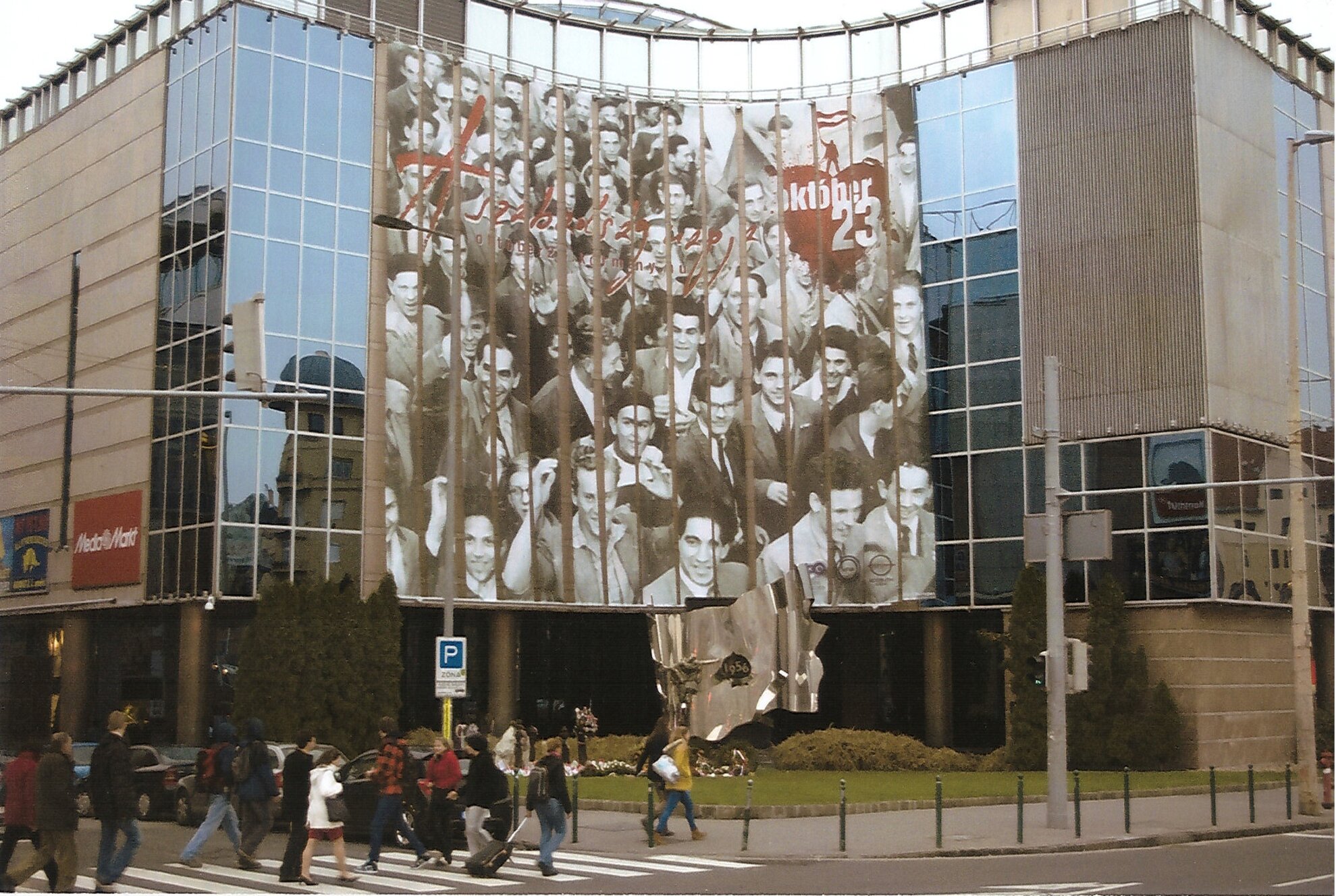
In the years that followed, Mr. Kalmár’s father – who openly supported the revolution, but also did not fight in it – was banned from practicing journalism, and relegated to editing the horse-racing form. However, the gift of English that he bestowed on his son proved invaluable, as Mr. Kalmár could use his language skills to embark on a career as a hotel concierge. In this occupation, he enjoyed being able to speak with people from outside of Hungary on a regular basis while working at what is now the Corinthia Hotel Budapest for decades, and becoming one of the founding members of Hungary’s Clefs d’Or association.
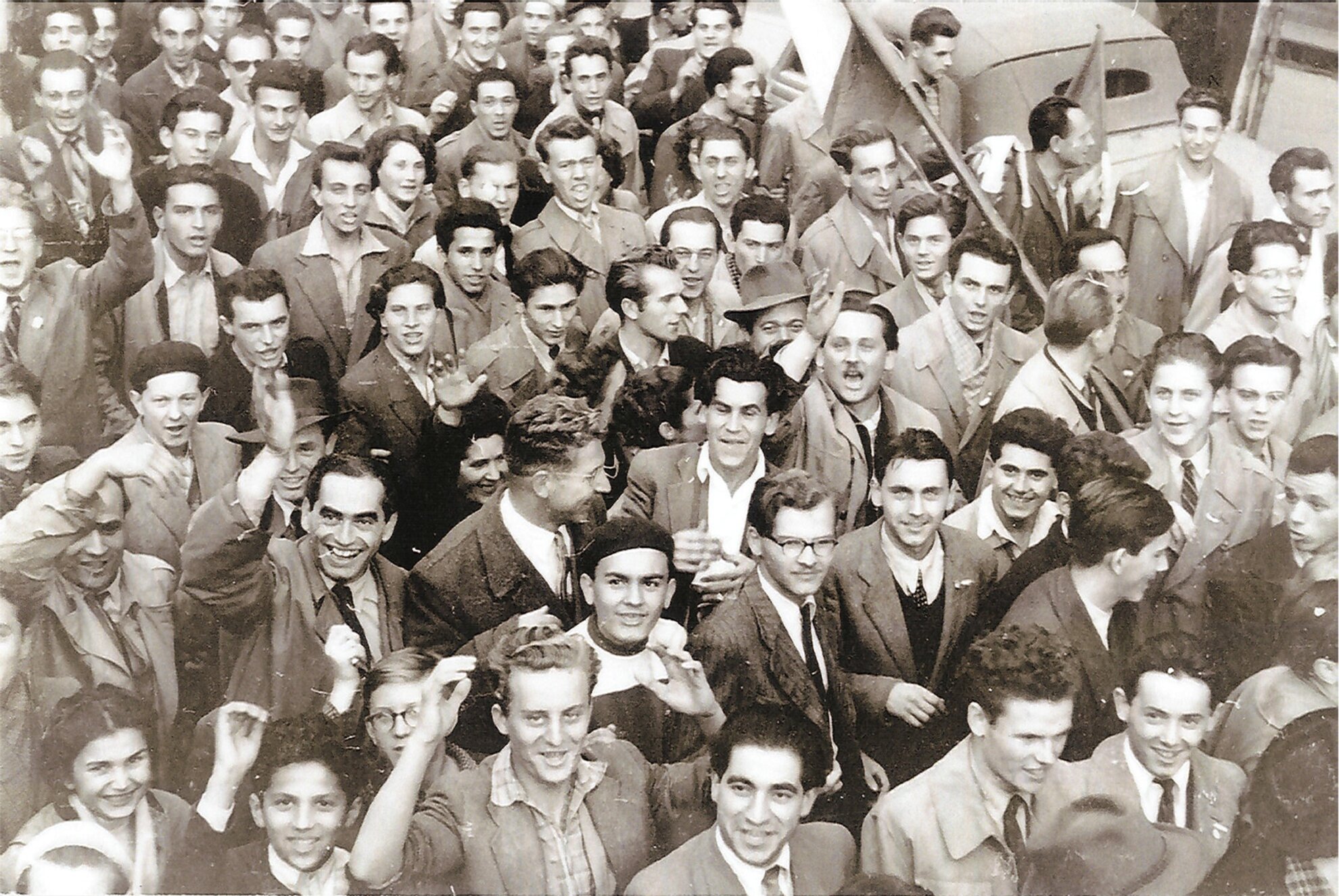
These days, the ever-energetic and congenial Mr. Kalmár continues to serve as an adviser to the Clefs d’Or board, and meets with his old classmates every month – including Mr. Apáti – to reminisce and pay tribute to those who did not survive the 1956 Revolution. On October 23 of 2012, the longtime friends gathered at the 1956 commemoration statue at Buda’s Széna Square; above it a gigantic photo portrayed a crowd from the momentous day when the uprising began. “One of my classmates looked up, and started pointing at the picture, saying ‘Look, György! It’s us! It’s our class!” By incredible coincidence, the photo captured Mr. Kalmár and his friends as they crossed Margaret Bridge with beaming smiles on their faces, unknowingly enjoying their final hours of hopeful innocence.
